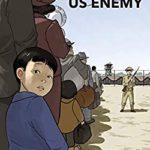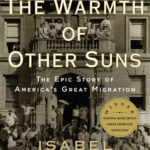Forced Migration

Burundian refugees fleeing political violence arrive in Mboko, Democratic Republic of the Congo, 2015.
Photo courtesy of United Nations High Commissioner for Refugees © UNHCR/Federico Scoppa
While we often think about people moving to seek a better life, the World on the Move exhibition also includes many examples of people who were forced to move. This includes cases where people were trafficked or coerced, such as the enslaved Africans whose Yoruba religion was one of the roots of Santeria and the Japanese Americans who were forced into concentration camps by the U.S. government during World War II. In other cases, people are forced to move to escape dangerous situations; they may be refugees, such as Jewish children escaping Nazi-occupied Europe in the 1930s and ‘40s and people fleeing present-day political violence in Central Africa, or if they do not cross international borders, they are considered internally displaced people such as the African Americans of the Great Migration who were fleeing lynching and Jim Crow. The United Nations High Commission for Refugees has more information on refugees, asylum seekers, and internally displaced people.
To dig deeper on these stories, we recommend:
- Books by Japanese internment survivors Jeanne Wakatsuki Houston and George Takei, as well as a Smithsonian online collection of photographs of Japanese American incarceration
- A BBC documentary on the Kindertransport, featuring interviews with former child refugees
- Anthropologist Kathryn Stam has worked to welcome refugees from Thailand and Nepal to her community in Utica, NY; check out Dr. Stam’s TEDx talk, as well as the collection of photos that she curated.
- Vox produced a short video that follows the history of the Great Migration up to today, featuring the journalist and historian Isabel Wilkerson
World on the Move also includes an excerpt from the poem “Home” by Warsan Shire; the website Facing History and Ourselves has the complete poem, along with some suggestions for using it in the classroom, but readers should be aware that it includes a racial slur as well as mentions of sexual violence.
Videos
Kindertransport: A Journey to Life [2012] – Newsnight
Why African-Americans left the south in droves — and what’s bringing them back
Other Resources
Podcasts and Playlists
A People in Flight: African Americans in Movement – Smithsonian Center for Folklife and Cultural Heritage
Academic Articles
Representing the “European Refugee Crisis” in Germany and Beyond: Deservingness and Difference, Life and Death – SM Holmes and H Castañeda
Websites / Other
Refugees starting over – Kathryn Stam TedxUtica
Documenting History: Photography and Japanese American Incarceration During WWII – Smithsonian Learning Lab Collection created by Japanese American National Museum
Refugees Starting Over Collection – SUNY Polytechnic Institute, collection curated by Kathryn Stam
American Indian Removal: What Does It Mean to Remove a People? – Smithsonian National Museum of the American Indian Digital Lesson



